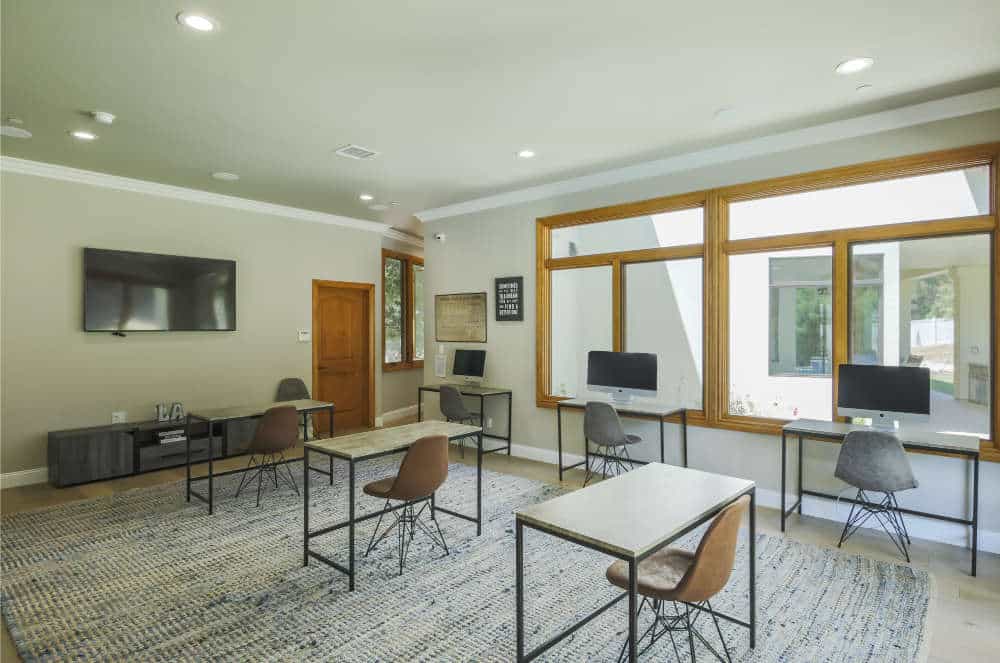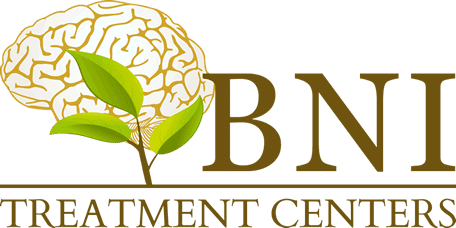At our mental health treatment center for teens, we understand how difficult this time is for the parents and families of a struggling teen. Our therapeutic and clinical team will provide therapeutic support and guidance for the family unit during the entire process.
MEDICAL DETOXIFICATION FOR TEENS & ADOLESCENTS
Our Detox Center for Teens
Teen substance abuse and addiction continues to impact young people, families, and communities across the U.S. In fact, about 5% of the teen population, or 1.3 million adolescents ages 12-17, struggle with a substance use disorder (SUD), according to the 2014 National Survey on Drug Use and Health. Without the appropriate therapeutic intervention, the problem will surely escalate, putting teens on a trajectory that could have devastating consequences for their lives.
When drug or alcohol abuse threatens a teen’s health, academic performance, and career aspirations it is time to get professional help. The first step in recovery from an SUD is the medical detoxification process where the body rids itself of the harmful substance of abuse. Our detox center for teens provides adolescents with the safety measures and emotional support needed during the difficult withdrawal phase.
MENTAL HEALTH & WELLNESS
Medical Detox and Withdrawal Management
BNI Treatment provides a supervised, safe environment for the adolescent beginning the recovery process with a medical detox. Owned and operated by adolescent psychiatrists and addiction medicine specialists, the treatment team at BNI has extensive training in both the physiological and psychological aspects of addiction and recovery. At the outset, a thorough evaluation of the teen’s drug history, physical health, and psychological history are assessed. From these results, an individualized long-term treatment plan is created.
During the 14-day withdrawal stabilization program, the teen’s vitals will be monitored throughout, and medications to assist with withdrawal symptoms will be administered throughout the process. Medically monitored detox supervision is needed because withdrawal symptoms are often unpredictable and can suddenly become a serious risk to the teen’s health.
Medication for withdrawals is essential for the successful completion of detox. Without this medical intervention, withdrawal can be very dangerous and even life-threatening. In addition, withdrawal symptoms may be so difficult to endure that the teen won’t complete the process without professional help. The teen will return to using the substance of abuse to put an end to the highly uncomfortable withdrawal symptoms, and recovery is abandoned.

Our Programs
Medical Detoxification

Medical Detoxification
Residential Inpatient

Residential Inpatient
Partial Hospitalization

Partial Hospitalization
Intensive Outpatient

Intensive Outpatient
Detoxification Timeline
When an individual has been abusing drugs or alcohol for an extended period of time, the brain and the body have made certain accommodations for the steady influx of the substance of abuse. When use of the substance is suspended, the body responds by rebelling, and withdrawal symptoms ensue. The symptoms and detox timeline will vary based on the substance of abuse.
In general, withdrawal symptoms begin within 6-12 hours of the last dose of the substance or alcoholic beverage. Symptoms will ramp up in intensity, usually peaking on days 2 and 3, and then begin to gradually subside over the next week to ten days. The exact length of the medically monitored detox process will depend to a large extent on the history and extent of use of the drug or alcohol.
Detox and Withdrawal Symptoms
When a teen has developed an SUD chances are it has resulted in an addiction or drug dependency. If so, a medical detox program is the first necessary step in recovery. Without a comprehensive medically supervised detox, withdrawal symptoms can vary from mild to severe.
Here are the possible withdrawal symptoms for common substances of abuse:
Alcohol
- Nausea and vomiting
- Sweating
- Hand tremors
- Headache
- Anxiety
- Insomnia
- Confusion
- Rapid heart rate
- Restlessness
- Loss of appetite
Opiate
- Nausea and vomiting
- Diarrhea
- Abdominal pain or cramping
- Watery eyes
- Sweating
- Muscle pain
- Goose bumps, chills
- Excessive yawning
- Insomnia
- Anxiety
Benzodiazepine
- Nausea, dry wretching
- Heart palpitations
- Shaking
- Irritability
- Sleep disturbance
- Panic attacks, anxiety
- Sweating
- Headache
- Difficulty concentrating
- High blood pressure
- Agitation
- Muscle pain and stiffness
Marijuana
- Abdominal pain
- Irritability
- Nausea
- Insomnia
- Restlessness
- Decreased appetite
- Nightmares
- Anger, aggressiveness
- Extreme nervousness
- Headache
- Tremors
Adderall
- Nausea, vomiting
- Stomach cramping
- Muscle aches
- Insomnia then hypersomnia
- Fatigue
- Mood swings
- Depression
- Headache
- Anxiety
- Malaise
- Suicidal thoughts
- Trouble concentrating
- Memory impairment
Experience. Connect. Grow.

Request a Confidential Callback
Our caring admissions team is standing by ready to help your teen or adolescent. Call us 24/7 or fill out our free form to request a callback right now.
We Currently DO NOT Accept Medi-Cal, Medicare, IEHP, Kaiser or Government state/county funded health insurance.
Medical Detox and Teen Treatment
Once the chemical substance has cleared the body, the teen and his or her parents will embark on the next phase of recovery, undergoing active treatment for the SUD. Detox alone is not adequate to achieving a sustained recovery. In most cases, underlying emotional pain, past traumas, risk-seeking behaviors, family dysfunction, or co-occurring mental health disorders are driving factors in the SUD and must be addressed and treated.
The expert team at our detox center for teens will provide clear guidance for the next steps, formulating a long-term treatment plan. This will involve a referral to a residential or outpatient treatment program for the continuation of the recovery journey.
How We Can Help Your Teen
Our program offers on-site academic support for continued success in all aspects of their life.
What a Teen Can Expect in Addiction Recovery Program
Once a teen has successfully completed the medical detox program, the next step in recovery is an addiction recovery program. Teen SUD treatment is available in age-specific programs offered in either an outpatient or residential setting. Generally, a mild to moderate SUD can be successfully treated via outpatient services, whereas a moderate to severe SUD is best treated in a residential program designed for teens.
Outpatient Treatment
The outpatient rehab option provides flexibility, allowing for the teen to attend school and then participate in treatment programming in the afternoons. The teen would remain at home outside of school and treatment commitments. Outpatient programming is available in different intensities, with the most intensive version being the partial hospitalization program (PHP), also referred to as day treatment. The success of an outpatient program will depend heavily on a supportive home environment.
Our our intensive outpatient program in Agoura Hills includes the following treatment elements:
- Individual psychotherapy. Teens who have an SUD often struggle with unaddressed or treated emotional issues that are contributing to the substance abuse. These issues will be examined and processed as part of the treatment of underlying factors.
- Group therapy. Teens are comfortable working in small groups at school, and find group therapy sessions edifying. During the sessions, topics will be introduced and discussed, allowing participants to offer each other support.
- Family-focused therapy. Addiction is a family disease. There are often dysfunctional aspects to the family dynamic that can be addressed and healed during family counseling sessions.
- Education. Teaching teens about how drugs or alcohol impact brain functioning can help them understand the lasting effects that substances of abuse have on their minds.
- 12-step or similar support group. The foundational themes in recovery support communities like A.A. or N.A. are sometimes included in a teen rehab program.
- Relapse prevention planning. Teens are provided with recovery tools that will assist them in avoiding relapse after the program has been completed. They are guided to identify what situations, places, emotions, or people are triggers to use the substance, and then to make a plan to manage the triggers in recovery.
GET HELP TODAY
Residential Treatment
Some teens will benefit from a residential treatment program for teens for their SUD because they will receive a more intensive approach to treatment. The teen resides at the treatment center for an extended period during which he or she will engage in a full schedule of therapeutic activities daily. The treatment elements align with those listed for outpatient services, however a residential program provides 24-hour monitoring and support, and a more intensive level of care across the curriculum. Students will be provided tutoring while in the residential program, allowing them to continue to complete academic coursework while in treatment.
We offer private mental health treatment for teens at locations in Agoura Hills and Calabasas in California near Los Angeles. We are conveniently located near Los Angeles International Airport (LAX) for those who are traveling outside of the local area.

We Can Help Your Teen Thrive
Are you ready to break free from the chains of addiction? Our comprehensive detox program at BNI Treatment Centers is designed to help you reclaim your life and start anew. With compassionate care and evidence-based treatments, we provide a safe and supportive environment for your detox journey.
Contact us today to learn more about how we can help you overcome addiction.
